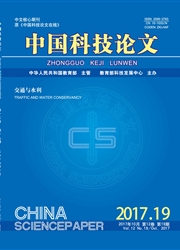

 中文摘要:
中文摘要:
基于DNA杂交耦合技术,研究以嗅觉受体蛋白作为敏感材料,利用声表面波(surface acoustic wave,SAW)器件检测敏感材料对特异性气味分子的响应特性,开发了1种新型仿生嗅觉受体传感器。首先,采用分子克隆技术获得嗅觉受体蛋白;其次,利用一对序列互补的DNA单链分别共价连接到嗅觉受体蛋白和SAW器件的敏感区域;最后,基于互补单链DNA杂交的原理将嗅觉受体蛋白与SAW器件相耦合,并检测传感器对不同气味分子的响应。结果表明,该传感器可以特异性地识别嗅觉受体蛋白的天然配体,而对其他被检测的气味分子没有明显的响应。由于采用了DNA杂交耦合技术固定嗅觉受体蛋白,与直接涂覆嗅觉受体蛋白的耦合方法相比,传感器的灵敏度提高了大约1.5倍。这些结果说明DNA杂交耦合技术可以有效提高嗅觉受体传感器的性能。
 英文摘要:
英文摘要:
Based on DNA hybridization coupling technology,a novel biomimetic olfactory receptor-based biosensor was developed using olfactory receptor protein as sensitive material and surface acoustic wave(SAW)device for detecting responses of sensitive material to the specific odorant molecule.For the first,olfactory receptor protein was obtained by molecular cloning technique.For the next,apair of complementary single-stranded DNA sequences was covalently attached to the olfactory receptor protein and the sensitive area of SAW device,respectively.Finally,based on the hybridization mechanism of complementary single-stranded DNA,olfactory receptor protein was coupled to SAW device for the detection of specific odorant molecules.The results indicate that this biosensor can identify the natural ligand of olfactory receptor protein specifically,and no significant response is observed to the other tested odorant molecules.The sensitivity of this biosensor is increased about 1.5times compared with the biosensor with directly coating coupling.These results demonstrate that DNA hybridization coupling technology can effectively improve the performance of olfactory receptor-based biosensors.
 同期刊论文项目
同期刊论文项目
 同项目期刊论文
同项目期刊论文
 期刊信息
期刊信息
